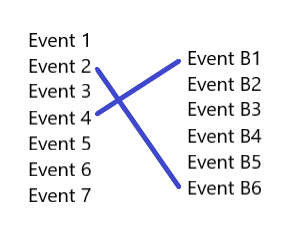Hi all, I’m not sure if my explanation makes sense, but here it goes. Combining stories that each play in different reals (dimensions?) and/or other planets, without the concept of a universal time, is tedious. Some planets have their full seasons while earth just has two. Maybe other dimensions have a faster clock, which means that being in this dimension for 5 earth-minutes, gives you a ‘local timeline’ of 7 days.
Aside from continuous doing math, is there a tool/approach known that allows me to combine various local times so that I have story-timeline what automatically converts whatever moment in time to each of the ‘local timelines’ that I created?
Aeon Timeline can do some pretty complex things with timelines. Not sure if it can “sync” multiple timelines the way you describe, though.
Aeon timeline may be able to help, as @dirkhaun suggests, but not by multiple timelines.
If you think about it, a story is arranged as a sequence of events. Time is less essential – it’s the order of events that determines the story. You’ll probably want to have a timeline, but for the events of primary interest - those of the primary character/s , say.
Aeon offers a ‘Subway View’ that you can read about here. In the Subway View, it’s event order that matters, and you can set tracks for characters, for story arcs, etc…
As well, there’s the Narrative View, here, which lets you organize according to progress in circumstances.
If you assign a primary timeline moment (time) for your events on other time systems, they’ll show and be manipulable on the main timeline also.
Then as far as local time systems, you should be able to calculate that based on the main timeline time. You could put the resutls in the Summary notes for the event.
The main caveat I could find is that if you don’t put any time on an event, then it doesn’t show on the timeline, and all will need to be manually positioned in the Subway View, which would get tedious.
So again, by considering in the framework of events and their ordering, and noting the time by your primary time system, you can organize your story events. You can compute the other system time for an event if you need it, then put that in the Summary for safekeeping and reference.
I think this works, as I’m imagining it, but of course your imagination may be different. I’d suggest downloading the free trial of Timeline – it lasts for 14 days – so you can get a good feeling for how it is for this eventing system or any other aspects you’d like to use.
You’d get this way an idea how much Aeon could be a help (or hindrance) by gaining the experience of those two weeks. It takes a little getting used to, as it’s not the simplest app, but when you need an ability, fhat often feels generally well thought out.
…tried to improve in the above the way using primary timeframe for other time systems can be done…better wording I hope…
Every event / sequence of events has a beginning and an end.
Personally, if I had to do what you want to do, I’d use a freeform mind map.
This way, if you have a chain of events that happens in contracted time, for e.g., you could simply draw a line from the event in normal time that correspond to when this other chain of event begins to its beginning, and its end to the event that matches in whatever is your “default” time the moment that second chain of events ends.

. . . . . . .
TIME TRAVEL :

![]()
(I like time travel, that’s why I make this face.)
Hi all, thanks for the feedback. I have reached out to Aeon - which I do annually just for this particular feature request - but they still have insufficient demand for that feature.
Reading through your thoughts on this, I will try to write my conversion web-app to solve my own use case and share the app with the community.
Happy New year!